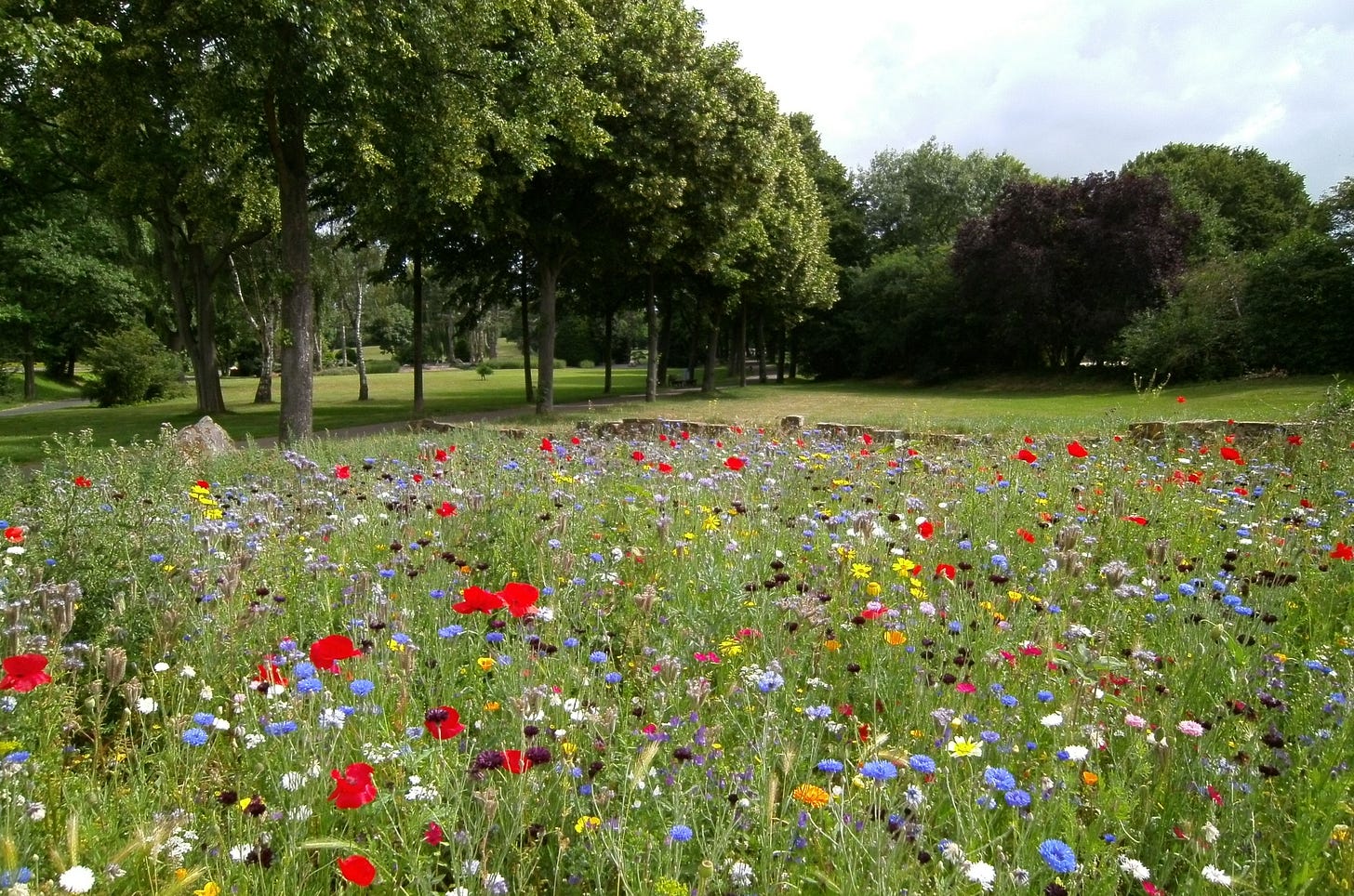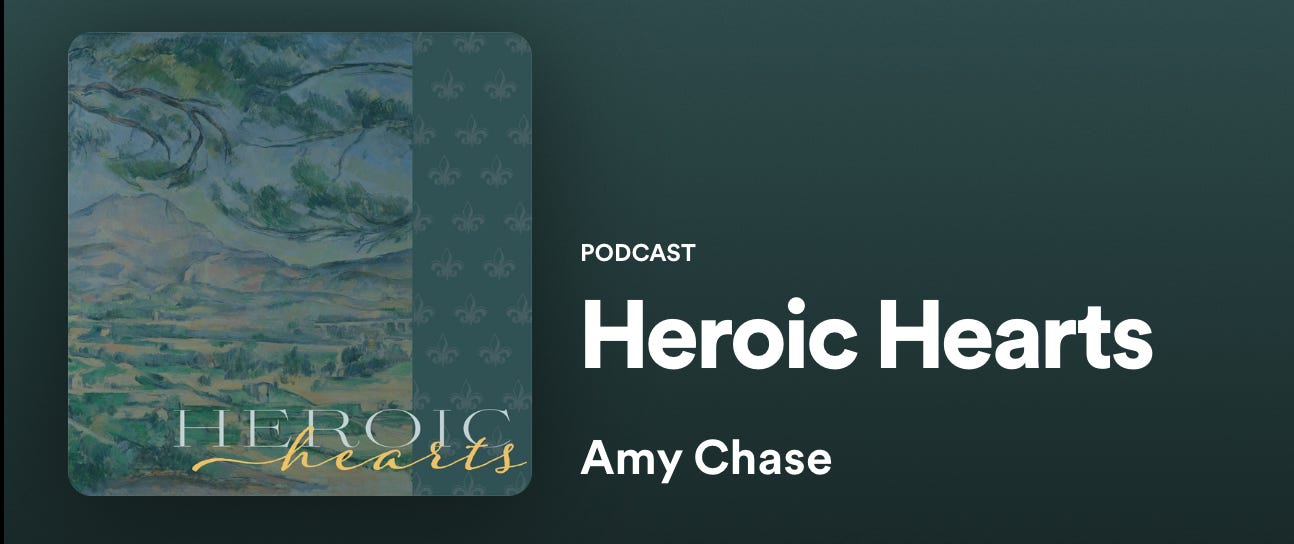Thérèse and Heidegger on the hiddenness of Being
Crowning the year and clothing the meadows
Hi. I’m Walter Emerson, a retired corporate executive who writes on phenomenological Catholic devotion to St. Joan of Arc and St. Thérèse of Lisieux. My project is a journey to the mystical Kingdom of Catholic and Royal France with these two saintly sisters.
Heidegger asked "why are there beings at all instead of nothing?"
Why are there beings at all instead of nothing? That is the question. Presumably it is no arbitrary question. “Why are there beings at all instead of nothing?”—this is obviously the first of all questions.1
From this vantage point, he derived an even more foundational question:
From the fundamental question of metaphysics, “Why are there beings at all instead of nothing?” we have extracted the prior question <Vor-frage>: How does it stand with Being?2
As one journeys with Heidegger, one finds that God has no place in his search, yet at the same time, one finds oneself led straight to God's doorstep.
The juxtaposition of one of today's psalms with Heidegger's dilemma struck me. It beautifully uses metaphysics and phenomenology to give us a sense of this "Being" that mystifies us.
Psalm 65, verses 6 and 7 have a metaphysical tone. God is the master of the universe, moving the natural world by His power. It is metaphysical because we can derive an ontology and epistemology from it. God is the unchanging (metaphysical) source of natural order and, therefore, of ontology and epistemology, i.e., what is the permanent nature of things, and how do we know that we can know these things?
6 who by your strength have established the mountains, being girded with might;
7 who still the roaring of the seas, the roaring of their waves, the tumult of the peoples;
Then the psalm uses a radically different mode to communicate the same message but through a different lens. This lens is phenomenological.
11 You crown the year with your bounty;
12 The pastures of the wilderness drip, the hills gird themselves with joy,
13 the meadows clothe themselves with flocks, the valleys deck themselves with grain, they shout and sing together for joy.
That God "established the mountains" and "stills the roaring of the seas" is easy enough to understand when one contemplates metaphysics. But how does one "crown a year," or do pastures "gird themselves with joy," or meadows "shout and sing for joy"? How did we move from the laws of nature to God infusing it with joy and crowning it? Can we see joy and a crown beyond our subjective, affective perception? Can we measure them? How does one discern "joy" and “crowning” as structures of physical nature when looking through a telescope or a microscope? Can one look deep enough into space or atomically precisely enough through a microscope to identify joy and a crown in nature?
St. Thérèse similarly contemplated the admixture of metaphor and metaphysics to reveal the phenomenological Being at the root of nature.
I understood that if all the lowly flowers wished to be roses, nature would lose its springtide beauty, and the fields would no longer be enameled with lovely hues. And so it is in the world of souls, Our Lord's living garden.3
Thérèse perceived a divine universality hidden in the natural world.
Then my reflections became really deep, and, without knowing what meditation meant, my soul was absorbed in prayer. Far-off sounds reached me, the murmuring of the wind, sometimes a few uncertain notes of music from a military band in the town a long way off; all this imparted a touch of melancholy to my thoughts. Earth seemed a place of exile, and I dreamed of Heaven.
Speaking of clouds, I remember how one day when we were out, the blue sky became overcast and a storm came on, accompanied by vivid lightning. I looked round on every side, so as to lose nothing of the grand sight. A thunderbolt fell in a field close by, and, far from feeling the least bit afraid, I was delighted--it seemed that God was so near.4
Following Thérèse's lead, "joy" in nature, as the psalm describes, and the "crown" that sits on the year are universal phenomena that remain hidden while simultaneously revealing themselves through the presence of beings. We can hear birds singing, detect the scent of fresh wildflowers, smell the rain, be astonished by lightning, and perceive "joy" and a “crown” as ontological realities in nature. But we can never see, hear, or smell them in themselves. Nature manifests them but they remain ontologically hidden.
Heidegger meant this by the hiddenness of "Being" in beings.
Yet that which remains hidden in an egregious sense, or which relapses and gets covered up again, or which shows itself only ‘in disguise’, is not just this entity or that, but rather the Being of entities, as our previous observations have shown.5
We see beings, but Being in itself never reveals itself as itself - ever. This paradox is Heidegger's fundamental quest - what is our relationship to Being, and why is there Being at all? What is Being? It's as if the psalm is responding to our deepest intellectual and ontological yearnings. "Here I am - Being - unveiled as 'joy' in my world and a 'crown' on the year. You see the manifestations of me but not me.... I AM Being itself as itself. I am always present yet always concealed."
That is the holy of holies. As we journey with Heidegger, let Thérèse be the one who leads us safely through the narrow pathways of contemplation. God as the hidden Being is always present in the world around us. Metaphysically, he is not us. God is the creator, and we are the created. Phenomenologically, he is always near in the smell of rain and the lightning in the distance.
Check out The Dove and Rose podcast here and on Anchor, Spotify, or Apple.
Check out the Heroic Hearts podcast on Substack, Spotify, or Apple. Heroic Hearts is a podcast about healing, enchanting, and elevating our hearts through the stories and spirituality of St. Joan of Arc and St. Therese of Lisieux. Co-hosted with Amy Chase.
Heidegger, Martin. Introduction to Metaphysics. 2nd ed. New Haven & London: Yale University Press, 2014. p. 1.
Heidegger, Introduction to Metaphysics. p. 45.
Thérèse, St. The Story of a Soul: The Autobiography of St. Thérèse of Lisieux. London: Burns, Oates, & Washbourne, LD, 1912. p. 22
Ibid. p. 38
Heidegger, Martin. Being and Time, n.d. p. 81





Well said: “As one journeys with Heidegger, one finds that God has no place in his search, yet at the same time, one finds oneself led straight to God's doorstep.”